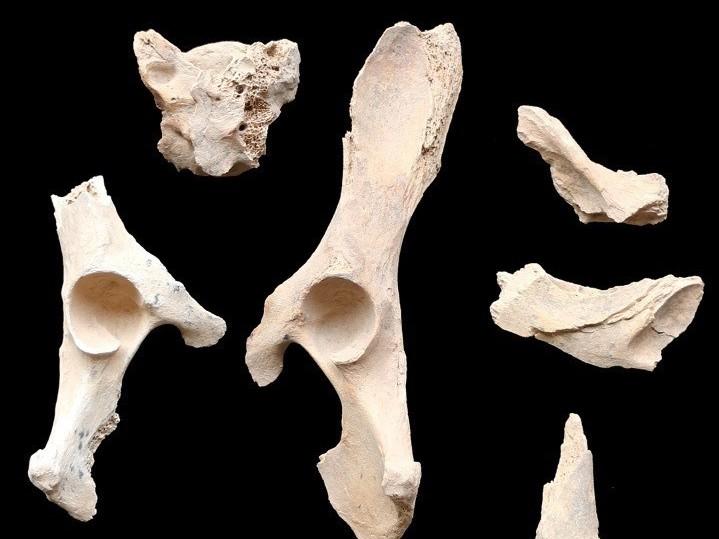Section Branding
Header Content
Man's Ancient Friend: 6,000-Year-Old Dog Remains Found On Arabian Peninsula
Primary Content
As archeologists in Saudi Arabia excavated an ancient tomb last year, they were surprised to find the remains of a dog buried alongside humans some 6,000 years ago.
"It was an incredibly exhilarating moment," archaeologist Hugh Thomas says. "Suddenly it dawned on us: Wow, do we have the oldest domesticated dog in Arabia?"
The burial placement suggested that the dog was domesticated, Hugh says. Signs of aging and arthritis on the dog's bones corroborated the theory because wild animals would not have lived such long lives.
Given how old the tomb was, Thomas suspected he may have found a historically early example of a pet dog. He wanted to use carbon-14 testing to date the remains to see whether he had a discovery on his hands.
Then COVID-19 hit. The team packed their things and rushed out of Saudi Arabia, leaving behind a mass of archaeological evidence.
While home in quarantine, Thomas began writing a study about the land survey and submitted it for publication. The publishers inquired about how old the dog remains were. The best Thomas could provide was a broad estimate based on the human bones.
Then suddenly, a tiny piece of the dog's jawbone was extracted from the site and submitted for carbon-14 testing. It turned out to be the oldest domesticated dog in the region.
The 6,000-year-old remains aren't groundbreaking; one of the earliest accounts of dog domestication is from 14,000 years ago in Germany. But this discovery does give researchers a clue about ancient life in the region.
"Little facets like this, like a single dog bone being C-14 dated, suddenly becomes a major part of the story of these people," Thomas says. "It ties in really nicely with the rock art that we have in the region showing packs of dogs used for hunting."
Thomas' team combined the bone sample with other types of evidence to get a clearer understanding of history. A big piece of the historical puzzle was rock art — paintings and etchings on slabs of rock created by people thousands of years ago.
Archaeologist Maria Guagnin, who specializes in rock art, teamed up with Thomas to develop the historical narrative around this now-oldest example of Arabian dog domestication.
"There's always been this debate," she says. "How much control did humans actually have over these dogs? Just from bone remains, you can't really answer that question. In the rock art, we could see there were leashes, and there was clear control over dogs. ... It was quite a close relationship."
In addition to leashes, the rock art shows dogs helping with hunting and other parts of daily life.
"Of course, a bond would grow between these people and the dogs," Thomas says. "The same way that we have a bond with dogs today."
Copyright 2021 NPR. To see more, visit https://www.npr.org.

